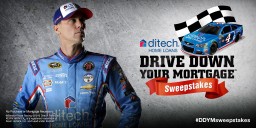Over the years, practitioners have been inclined to slice up marketing into increasingly small operational areas. When I started way back when there was “above the line” and “below the line” with advertising being elevated and all other forms of marketing being lumped together into an unglamorous morass of “oh yeah that stuff.” From that morass emerged direct marketing then CRM then digital marketing then search engine marketing then social media, influencer, content, employee and most recently, account-based marketing. Add to this ever-splintering tableau books like mine which identified 64 discrete elements and you might imagine that there is no such thing as a unified marketing department anymore.
Well, that would be categorically wrong and don’t just take my word for it. Paul D’Arcy, SVP of Marketing at Indeed, the top site for searching jobs in the world, makes it very clear in our interview below from his opening statement. To generate over 180 million unique web visitors a month, Paul and his team at Indeed take a holistic approach in their efforts to bring job seekers and employers together. An approach that includes storytelling of the highest order along with continuous testing of new channels and optimizing existing ones. And though Indeed remains one of the fastest growing brands in the world, Paul still believes his team can double the impact of their marketing investment leaving little wonder Paul why was presented with the Growth Award by The CMO Club late last year.
Drew: What new digital initiatives did you try in 2015 and how did these perform? What were your goals and how did it work out?
We don’t think about digital: we think about marketing. I think the most interesting things we’re doing this year are very traditional. We’re trying to tell our story of helping people get jobs through strong, authentic creative that features real people. We focus on results — and results for us means bringing job seekers and employers together to help people get jobs. We tell this story wherever we can engage people whether that’s TV, social, online video, or on the printed ad engaging someone on their commute.
Drew: Were there any areas of your digital marketing that you were disappointed with? If so, what were some of the issues you encountered?
Yes! I often say that I want the mean return on investment of our investments to be high and for the median to be zero. This means that we try many things and that more than half will fail. But we scale investment on the things that work and see great results. If we’re not trying things that fail than we’re falling behind in a quickly shifting world. We find that we rarely get a creative strategy or new engagement channel right the first time. We always test multiple approaches to deepen our understanding and find the right way to engage our constituents.
Drew: A recent survey of marketers suggested that less than 10% feel they are leveraging data to the fullest extent possible. Why is this such a challenging area to get right?
We’re at a point where there is really, truly endless data available to us. Analysis (or programmatic use of data) takes skill, time, and work. We need to pick and choose the data we want to understand and commit to do the work to get the insights that make us better. There will always be blind spots, and data that is out there but that no organization has the time to pull it together, organize it, and analyze it. Picking the right data to analyze and understand is a very important capability. We love hiring people who are naturally curious because they always take us a step or two deeper into the data than we would have gone otherwise.
Drew: Marketing, especially data integration, often requires skills sets beyond the typical marketer. How have you been able to corral the resources and skill sets needed to achieve your digital marketing goals? Did this require new management skills?
We have chosen to build a team that blends, in equal parts, highly technical marketers, highly creative markets, and people with deep functional expertise. A large percentage of our marketers can code. We’ve had marketers move from our team into core product software engineering at Indeed. We have software engineers, data scientists, statisticians, economists, and mathematicians on the team. I think these skills — and the skills to lead and mentor these technical teams — are absolutely essential to building a great marketing function and measuring the impact of marketing investments.
Drew: With the plethora of digital marketing options, channels and content available today and increasing quickly, how do you decide where to “place your bets” in terms of marketing spend and choices?
We test first and scale the things that work. The key is to test as many things as possible. For us, this is complex because we’re in 50+ countries and it’s important to understand not just what works, but where it works and doesn’t work. We focus all of our teams on trying as many things as possible and measuring the impact. We encourage people to fail. But, as more programs do become successfully and scale, it does become hard to start with new programs with big potential but that start small. To help with this, we have a dedicated campaign lab team that reports to me directly and that focuses on testing large quantities of ideas that start small and are likely to fail.
Drew: What is the single biggest marketing challenge that you’d like to overcome?
I think we can still double the impact of every marketing dollar that we spend. As a relatively new brand, there is still so much that we don’t know. We have a long list of documented things that we don’t know and we’re working to create the measurements and experiments to answer these questions. I’m incredibly excited for what we’ll learn as a team in 2016.

